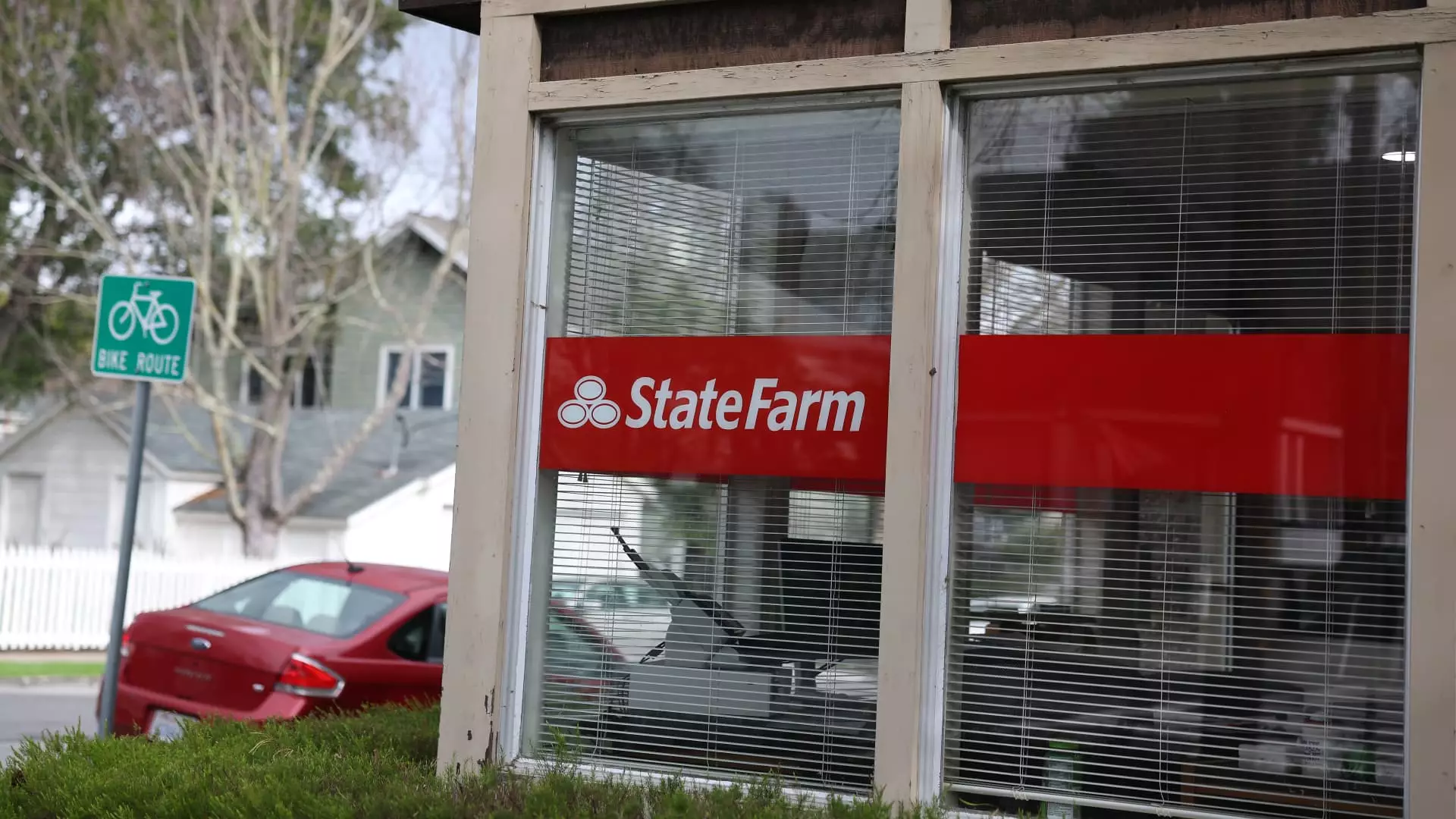California is grappling with an insurance crisis that puts millions of homeowners at risk while exposing the underlying unsustainability of an increasingly pressured market. At the center of this turmoil is State Farm, the state’s largest property insurer, which is on precarious ground after the catastrophic Los Angeles wildfires. Seeking an emergency rate hike, the company claims it needs these additional funds not merely for profit but to avert financial disaster. The situation is reminiscent of a ship navigating tumultuous waters, with an iceberg looming dangerously close. The jeopardized future of millions of Californians hangs in the balance, and the time for action is nearly out.
These wildfires aren’t just a natural disaster; they’ve become a barometer for the financial health of the insurance market in California. State Farm has indicated that its losses could reach approximately $7.6 billion due to the fires, yet reinsurance mechanisms will only mitigate this to around $612 million. The insurer has submitted a revised request for a 17% increase in homeowners’ insurance premiums, down from an initial 22%, and a staggering 38% for landlord renter policies. Their survival relies on regulatory approval. Critics, however, are quick to point out that these drastic measures may not be justified.
Analyzing the Insurance Landscape
Historically, the insurance model in California has come under immense strain due to a rising tide of natural disasters. The frequency and intensity of events have challenged the viability of insurers, leading to significant payouts that routinely overshadow premium collections. This year, the California Department of Insurance revealed that many companies are paying out more in claims than they take in from policyholders, a notion that seems poised to continue.
While State Farm’s case is compelling, framed through economic necessity, it raises a sharp question about the adequacy of current insurance frameworks in California. What is evident is that insurers are increasingly retreating from the market rather than adapting. Just last year, State Farm ceased issuing new homeowners’ policies, a cascading decision that reflects a larger trend among insurers. This is detrimental not only to their bottom lines but also to consumers, amplifying the precariousness of the entire system.
The Role of Regulatory Bodies
As the hearing progresses, the state’s insurance commissioner, Ricardo Lara, finds himself navigating the murky waters of consumer protection versus business sustainability. Elected and accountable to voters, Lara’s reluctance to approve significant rate increases highlights the tension between maintaining affordable insurance and allowing insurance companies to remain solvent. Consumer advocacy groups like Consumer Watchdog argue against State Farm’s attempts to pass the buck to homeowners. Their lead attorney, William Pletcher, asserts that the company has not made a cohesive argument for why their rate hikes are necessary. Furthermore, they argue this inconsistency undermines the case for any increase including the timid shift from 22% to 17%.
On the flip side, economists and state officials argue that ensuring the financial stability of State Farm is crucial. Without it, the risks extend beyond mere profitability; they compound to community financial health. The FAIR Plan, California’s insurer of last resort, has become a refuge for those dropped by traditional insurers, but it is already overwhelmed. If State Farm treads water for too long, California could face a scenario where even this safety net proves insufficient, leaving homeowners adrift.
The Market’s Response and Future Outlook
Interestingly, while State Farm’s dire circumstances have led to temporary concessions, these adjustments highlight a troubling trend towards fragility and instability in the market. An analysis by S&P Global placed State Farm’s California arm on “CreditWatch Negative,” which illustrates how the insurance landscape has transformed into a precarious balancing act with devastating consequences looming.
Faced with the intricacies of catastrophe modeling and diminished capital, insurers such as State Farm are desperately competing against time, and whether or not these rate hikes are approved will set a precedent for the future dynamics of the market. Janet Ruiz from the Insurance Information Institute posited that California’s “Sustainable Insurance Strategy,” designed to address systemic issues, is essential for restoring stability. Yet whether this strategy can withstand the test of time remains doubtful, especially in an environment often marred by political knee-jerking and consumer uprisings.
As we stand at the precipice of potential regulatory change, the irony remains potent: California, a state that prides itself on progressive values, is finding itself ensnared in a conservative bind where the need for sound economic strategies clashes with the desire for affordable coverage. The outcome of this hearing will shape the landscape for years to come, and just as we witness the consequences of wildfires, we may also soon recognize the repercussions of the decisions made within the hallowed halls of government this week.

